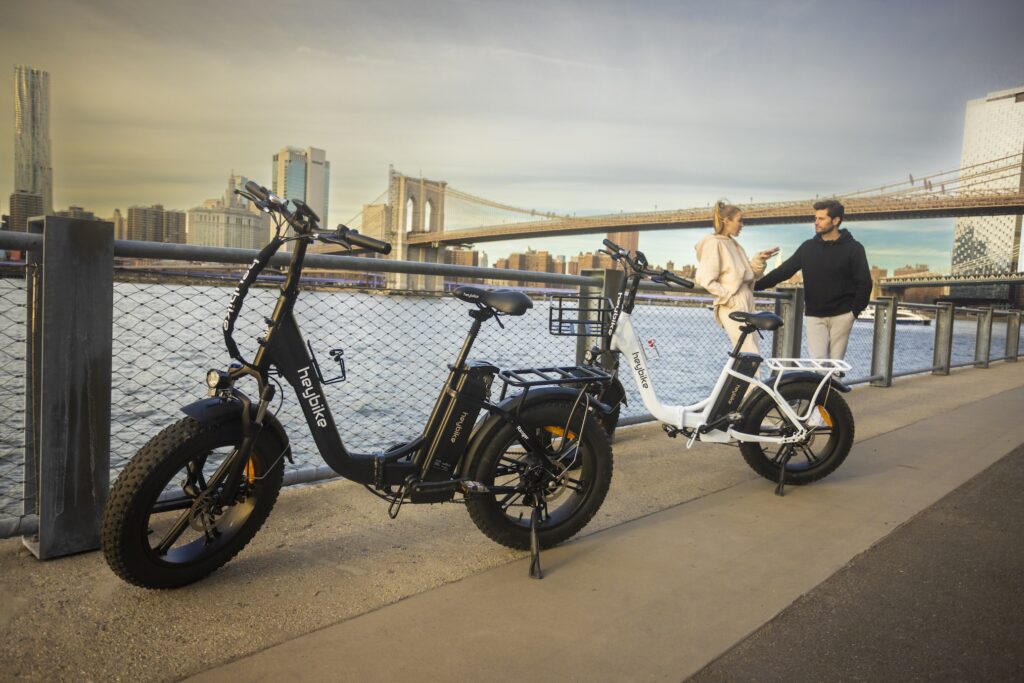In the age of digital disruption, electric bikes are revolutionizing urban commuting. With their compact size and powerful motors, they offer a viable alternative to traditional modes of transport such as cars, buses, and trains.
Electric bikes provide an efficient way to get around cities without exerting much effort or energy. They also reduce pollution levels in congested areas and can be used for both leisure activities as well as transportation purposes.
The rise of electric bikes is transforming how we commute from one place to another – offering riders a cost-effective, sustainable, and convenient form of transportation. Electric bike deals are making it even more accessible for individuals to make the switch, and this mode of transport will soon become the norm in cities all over the world.
Understanding the Potential of Electric Bikes in Urban Areas

Source: unsplash.com
Electric bikes have the potential to revolutionize urban commutes, making them faster, easier, and more efficient than ever before. As cities become increasingly populated, electric bikes can help reduce traffic congestion while providing commuters with an eco-friendly transportation alternative.
Electric bikes offer a range of features that make them ideal for urban areas including lightweight frames, powerful motors, and improved battery life. They also provide riders with greater control over their journey as they can travel at different speeds on different terrain – meaning cyclists don’t necessarily have to stick to designated bike lanes or roads to get around town quickly.
Furthermore, electric bikes require less physical effort from riders which makes them perfect for those who may need a little assistance getting around town without having to use public transport. The combination of convenience and efficiency make electric bikes a great option for anyone looking for an environmentally conscious way of getting around the city in style.
Overcoming Challenges to Widespread Adoption of E-Bike Technology
The electric bike revolution is set to transform urban transport, providing a greener and more affordable alternative to traditional petrol-powered vehicles. However, there are still several challenges that need to be overcome before e-bikes can become widely adopted in cities around the world.
Cost is one of the biggest deterrents when it comes to purchasing an electric bike. Many models come with a hefty price tag which puts them out of reach for many people.
To encourage wider adoption of e-bike technology, governments should provide financial incentives such as tax credits or subsidies for buyers who want to switch from less sustainable forms of transportation. Another challenge facing widespread adoption is safety regulations and education about how these bikes work and how they differ from regular bicycles in terms of speed and acceleration capabilities.
Cities must develop comprehensive rules on where riders can use their e-bikes and ensure that users understand what those restrictions mean in practice – including appropriate speeds for riding on roads shared with other vehicles versus dedicated cycle paths or trails for cyclists only.
Additionally, cities should offer training courses on the safe operation of electric bikes so that users understand best practices before taking their new mode of transport out into public spaces.
Finally, infrastructure needs to keep pace with wider uptake; if large numbers start cycling regularly then improved bike lanes will be necessary along routes commonly used by commuters as well as secure parking facilities at destinations such as train stations, workplaces, or universities which may not have been designed originally with cycles in mind but could now benefit from specific bicycle storage areas catering specifically for e-bikes.
Exploring Innovations in Electric Bike Design and Infrastructure

Source: unsplash.com
The rise of electric bikes is revolutionizing urban commuting. Electric bikes provide riders with an environmentally friendly, affordable alternative to traditional transportation methods such as cars and buses.
As more people become aware of the benefits associated with electric biking, innovations in design and infrastructure have emerged. By exploring these new designs and infrastructures, cities can create a greater sense of mobility for their citizens while reducing traffic congestion and air pollution levels.
Electric bike technology has advanced rapidly over recent years due to improvements in battery capacity, motor power, speed control systems, frames, and other components. Additionally, the introduction of smart technologies like GPS navigation systems enables commuters to plan their routes easily.
This provides them with an efficient means of getting from one place to another without relying on public transport or private vehicles.
Furthermore, advancements in electric bike infrastructure are also creating a more connected environment where cyclists can access charging stations quickly when they need it most during their travels.
Innovations such as self-charging docks allow riders to charge up their batteries at designated locations throughout the city or even right at home if needed; this makes owning an e-bike much easier than ever before! Similarly, solar-powered charging stations help reduce electricity costs while providing sustainability-minded commuters with clean energy sources for powering up on those longer journeys into town or out towards nature trails beyond city limits.
These developments coupled with improved network connectivity enabling cyclists to get real-time information about road conditions further enhance overall safety measures which make electric biking even more attractive for everyone involved – both municipal governments looking towards greener futures as well as individual riders who want convenience combined with cost savings when it comes traveling around town!
Creating Sustainable Solutions for Urban Commuters
The rise of electric bikes is revolutionizing urban commuting. Electric bikes are not only more efficient, but they also offer commuters a sustainable solution to their transportation needs.
With no gas or oil involved in the ride, electric bikes require less energy and create fewer emissions than traditional vehicles. These advantages make them an ideal choice for those looking to reduce their carbon footprint while getting around town quickly and easily.
Moreover, with advances in battery technology offering longer range on a single charge, riders can travel farther distances between charges without having to worry about running out of power mid-trip. This makes electric bike ownership far more viable for commuters who need reliable transportation options that don’t harm the environment.
To maximize these benefits and ensure that this new form of transport remains both accessible and affordable, cities should consider implementing charging infrastructure such as public bike docks throughout downtown areas so that commuters have easy access to an ever-increasing network of available charging stations when needed.
By creating policies that support the proliferation of electric bikes as a sustainable form of urban transit we can help usher in a cleaner future for our cities and their inhabitants alike – one where we can enjoy all the convenience modern mobility has to offer without compromising our planet’s health along the way!
Conclusion

Source: unsplash.com
The electric bike revolution is here, and it’s changing the way we commute in cities around the world. Electric bikes are more affordable than ever before, with many electric bike deals available on some models that make them even more accessible to those looking for an alternative form of transportation.
In addition to being cheaper and easier to maintain than traditional vehicles, electric bikes also help reduce emissions associated with commuting, making them a great option for commuters interested in reducing their environmental impact while still getting around quickly and easily.
With all these benefits combined, it’s no surprise that electric bikes are becoming increasingly popular among urban commuters who want to save money and time while minimizing their carbon footprint.




